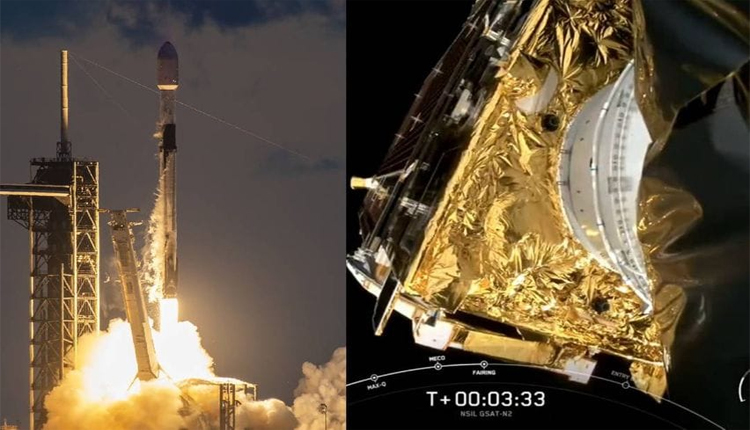Florida: While most people were sound asleep, during the night hours the Indian Space Research Organisation (ISRO) was in the spotlight again for an accomplishment. On Tuesday morning Elon Musks SpaceX effectively sent ISROs GSAT 20 satellite into space using a Falcon 9 rocket launched from Cape Canaveral in Florida. The GSAT 20 satellite weighs 4, 700 kilograms. Is designed to improve data and internet connectivity to underserved areas, in India.
The GSAT N2 satellite is designed specifically to improve access, to data and internet services in areas that lack coverage and to provide in flight internet services throughout the subcontinent region using SpaceXs rocket due, to its weight exceeding ISROs Mark 3 launch vehicle capacity of 4 000 kilograms.
This represents ISROs initial business partnership, with SpaceX.The GSAT20 falls under the throughput communication satellite category that functions, in the K band range.It was created by NewSpace India Limited (NSIL) ISRO’s division affiliated with the Indian Space Ministry.
The GSAT 20 satellite is distinguished by its spot beams. Is meant to cater to a wide user audience using smaller terminals, for connectivity purposes as stated by ISRO officials. The satellites operational life span is projected to be 14 years with a total of 32 user beams, in place–comprising eight spot beams serving the northeast region and 24 broader spot beams encompassing the remaining areas of India.The network will be augmented by stations located across India to ensure a combined data transmission capacity of 48 Gbps.
Dr M Sankaran of the U R Rao Satellite Centre, in Bengaluru mentioned that once this homegrown satellite is up and running it will greatly improve internet access during flights by utilizing the high demand K band spectrum. Making it Indias powerful satellite, for this purpose.
In the pasts years the rule, for flights arriving in India were that they had to turn off their internet services since using in flight connectivity was not allowed there before now things changed and recent regulations now permit, in flight internet access while flying over airspace under new rules planes flying above 3,000 meters are allowed to provide Wi Fi services as long as passengers are allowed to use electronic devices during the flight.
The recent launch of GSST 20, by ISRO marks a step, towards enhancing connectivity throughout India and setting the stage for an inclusive digital future ahead.



Comments are closed.